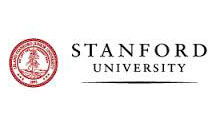This job has Expired

KASI-KIPAC Rubin Observing Specialist Fellowship
Job Description
The Vera C. Rubin Observatory is a next-generation astronomical facility currently under construction in Chile, with operations staff distributed across multiple sites, one of which is SLAC National Accelerator Laboratory, operated by Stanford University. Rubin Observatory will undertake the Legacy Survey of Space and Time (LSST) which will be one of the largest and most comprehensive astronomy surveys of its kind. Rubin will enable countless discoveries in almost every area of modern astronomical research—discoveries made possible by the team that built the Rubin Observatory system, and by the global science community that Rubin Observatory serves.
SLAC has been the lead lab for construction of the LSST Camera, and will continue to provide scientific and technical support for LSSTCam during Rubin survey operations. SLAC and Stanford are partners in the Kavli Institute for Particle Astrophysics and Cosmology, which hosts a broad program in astrophysics. Existing research programs at KIPAC include studies of dark energy, cosmic dynamics, structure formation, galaxy formation, the physics of inflation, studies of and searches for dark matter, interstellar medium physics, and studies of black holes, galaxies, clusters of galaxies, the Milky Way, stars (including the Sun), extrasolar planets, and other astrophysical sources, and many KIPAC members are preparing to do science with the LSST.
The Korea Astronomy and Space Science Institute (KASI) is a major research institution in Daejeon, Republic of Korea whose main functions are to operate major facilities for research in astronomy and space science and to carry out various scientific researches including studies on the Universe through astronomical observations, theoretical studies, and state-of- the-art instrumentation. KASI and SLAC are collaborating on the support of Rubin Observatory operations through the Rubin in-kind program.
Together, KIPAC and KASI invite you to apply for a 4-year postdoctoral research position at Rubin Observatory and Stanford, with the possibility of a further two years extension resident at KASI.
(Further KIPAC-only positions, without the optional extension at KASI, are also available, and will be awarded following the same KIPAC and Rubin evaluation process as for the KASI-KIPAC Fellowship. You only need apply once, in response to this advert, to be considered for either type of position.)
For the first two years, after a brief training period at SLAC, you will be a Rubin “Observing Specialist” resident in Chile, working in a diverse team to operate the Simonyi Survey Telescope and LSST Camera, with skills including understanding software scripts and conducting hands-on technical work and image diagnostics, and with a common duty of operating the Rubin instrumentation during nighttime. You will then spend two years at KIPAC, exploiting the deep understanding of the Rubin system that you will have gained to carry out a program of cutting edge astrophysics research with the LSST data (while continuing to contribute low level remote observing support). After this initial 4-year term, you will have the choice to work at KASI following an application for a 2-year extension and successful evaluation of your performance at KIPAC. (You would express your intention for this 2-year extension and submit the extension application before the end of the first quarter of the third year of the Fellowship). If and when the 2-year extension is approved, you would become an employee of Center for Large Telescopes (CfLAT), KASI, starting from the fifth year of what would then be a 6-year fellowship.
The term of your position will be a very exciting time for Rubin Observatory, with the LSST due to begin in 2025. This is a truly unique opportunity to join the operations team that will make Rubin reach its ground-breaking science goals, and then capitalize on your operational experience in an extended period of postdoctoral research.
Your responsibilities will include the following:
- Learning how to control and operate a wide variety of systems that make up the Rubin Observatory including the Simonyi Survey Telescope, its commissioning instrument (ComCam), and later the main science camera (LSSTCam), the calibration systems and more.
- Night-time operation of the primary Simonyi Survey Telescope and the auxiliary calibration telescope, AuxTel, including troubleshooting of both the hardware and software, and prompt assessment of environmental conditions, optical performance, image quality, and general system performance.
- Carrying out a program of original Rubin/LSST astrophysics research.
- Promoting collaboration between KIPAC and KASI.
To be successful in this position you will bring:
- A recent Ph.D. in astronomy or physics (or the expectation that you will receive the degree prior to starting your appointment), whose award date is no more than 5 years before the start of the appointment, October 1, 2024.
- Including your thesis work, at least 3 years of research experience involving at least one of the following:
- Hands-on observing at optical or infrared astronomical observing facilities, or comparable laboratory activity;
- Reduction and analysis of astronomical imaging data;
- Development and/or execution of data analysis or instrumentation projects in wide field optical survey cosmology.
- Familiarity with ticket-based work management systems such as Jira, and high level software scripting knowledge in Python (preferred) or equivalent.
- Organizational and communication skills, with the ability to learn quickly and convey complex technical concepts effectively with a diverse population, such that you are able to work productively in a multinational team.
- Dependability, flexibility, and willingness to take the initiative.
- Demonstrated ability to carry out independent research, collaborating closely with colleagues working both locally and remotely
Applying for these positions, you should know that:
KIPAC is committed to an inclusive work environment and encourages applications from candidates who will diversify the workforce in astrophysics and cosmology. More information about Stanford’s ongoing commitment to a diverse and inclusive environment can be found at ideal.stanford.edu. Above all we are looking for someone enthusiastic with a desire to learn and experiment in a highly supportive and collaborative environment.
While in Chile, you will be a member of a 12-person Observing Specialist team working the same observing shift rotation but with (on average) 20% of your time available for research. This 20% should provide ample time to develop research projects while you are in Chile, to be carried out on your return to the US. In your final two years, you will focus on your research program, but spend 20% of your time providing remote observing support from SLAC. In the optional 2-year extension at KASI you will have 100% of your time available for research.
A research mentor on the faculty or staff at KIPAC will support you throughout your four-year term, helping you develop your research program, establish and maintain good strong connections to the LSST science community, and capitalize on your observatory experience in your research. Likewise, a research mentor at CfLAT, KASI will be assigned to support you throughout the 2-year extension should you take it up.
Stanford offers an excellent benefits package including paid time off, competitive salary commensurate with experience, and an attractive, inclusive and collaborative work environment in the foothills of Silicon Valley. All relocation expenses to Chile, and back to Stanford will be covered. Relocation support to Korea is subject to the related KASI rules.
Working at the Rubin Summit Facility is demanding. While in Chile, Rubin Observing Specialists must be:
- Able to work both at day or night on the Cerro Pachón summit, which is at 3,000m (9,000 feet)
- Willing to stay at the summit for multiple days/nights (food and lodging provided).
- Willing to work scheduled shifts, including over weekends and holidays. Schedule is subject to change and varies by person within the group based on their responsibilities.
- Fluent in English, while command of the Spanish language is an advantage.
- Responsible for the safety of people and equipment while working at night.
- Observing Specialists are required to have a valid driver’s license and experience in driving a 4WD.
Application materials should be submitted at https://academicjobsonline.org/ajo/jobs/25538 . Candidates should provide a curriculum vitae including a publication list, a 3-page statement of research interests and plans, and arrange to have at least three letters of recommendation submitted to the same site. We encourage applicants to follow the structure of the AAS advice on the contents of CVs and research statements given here: https://jobregister.aas.org/postdoc-application-guidelines . Applications are welcome to provide an additional statement (up to one page) that discusses their experience with or commitment to engaging in mentoring, outreach, teaching, public policy, fostering inclusive environments, or activities that diversify the field.
The deadline for applications is Friday November 24, 2023 (by midnight Eastern Time). Late applications may be considered at the discretion of the search committee. More information about KIPAC can be found at http://kipac.stanford.edu , and about KASI at https://www.kasi.re.kr.
*Please mention you saw this ad on AcademicJobs.*




